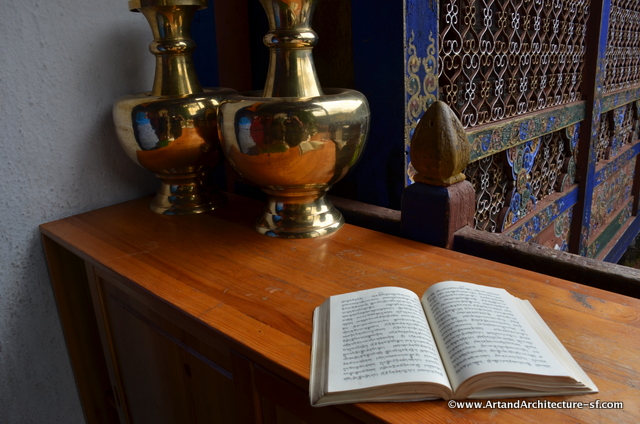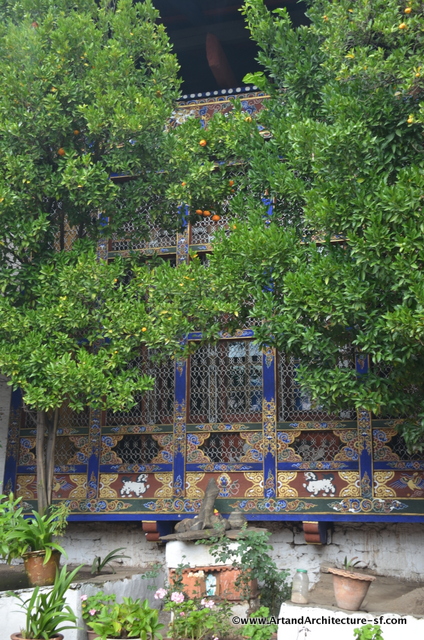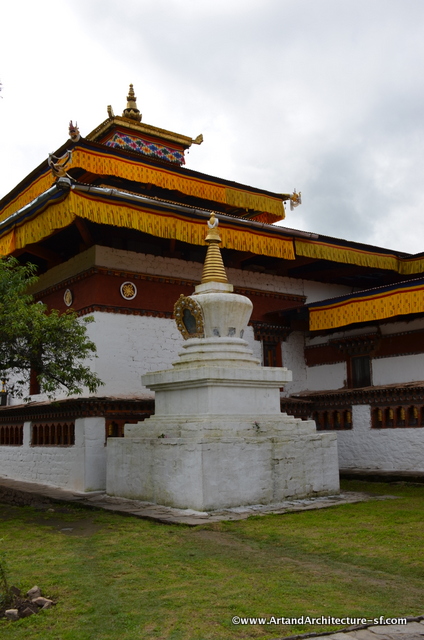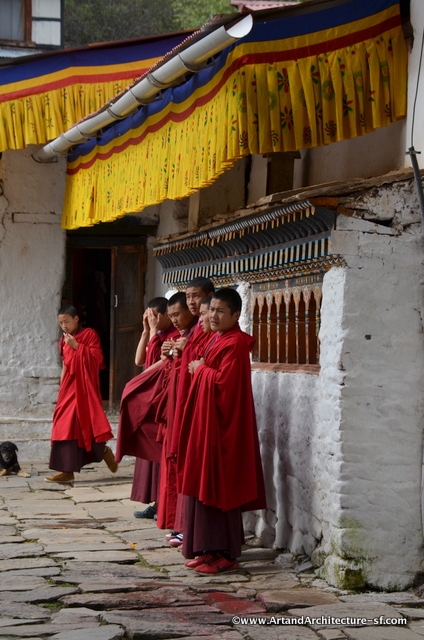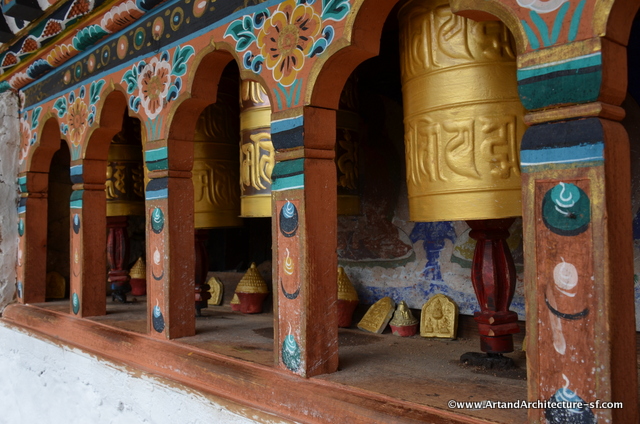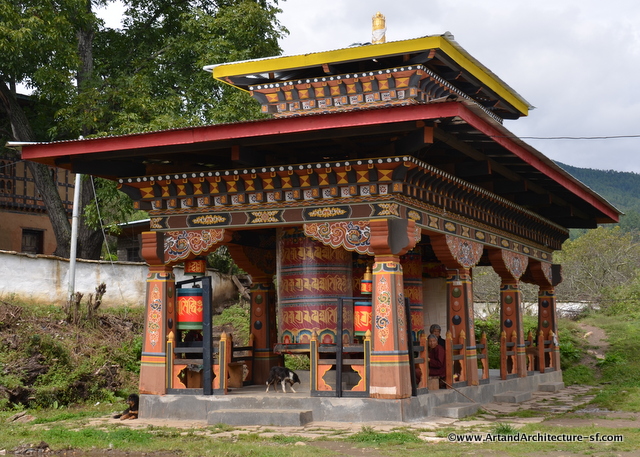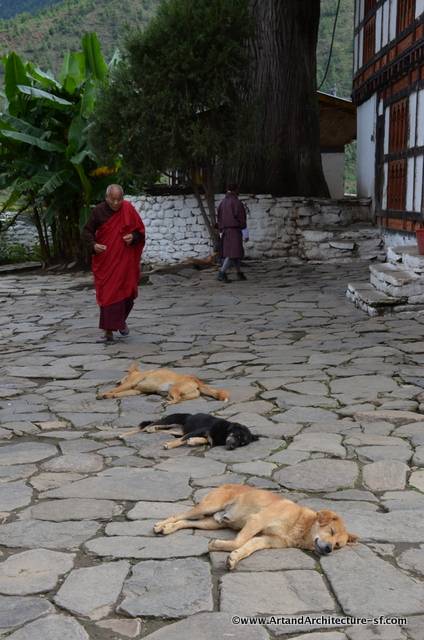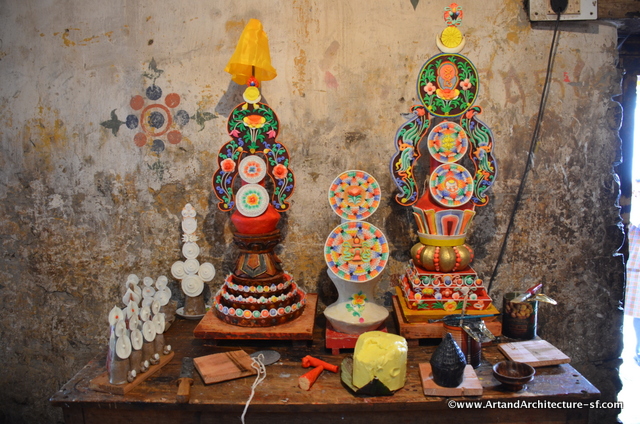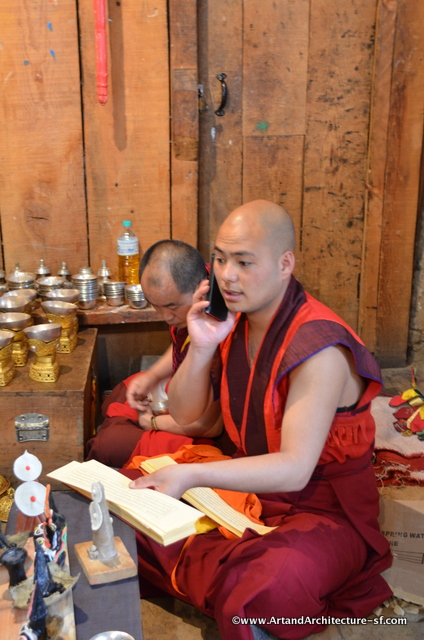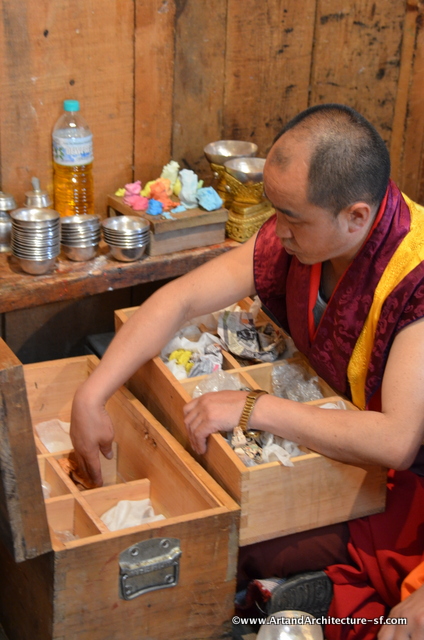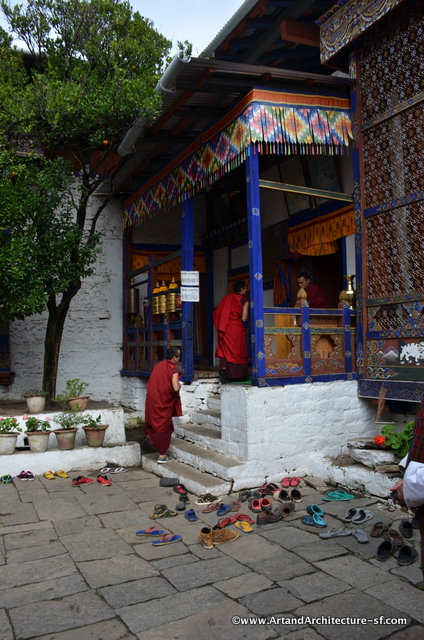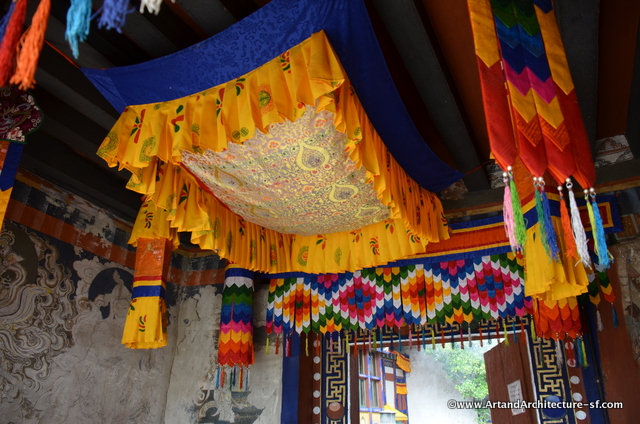September 22, 2015
Paro, Bhutan
Blessed Rainy Day
Today is Blessed Rainy Day, a national holiday in Bhutan marking the end of the monsoon season. Today all natural water resources in the country are considered to be sanctifying and the people are encouraged to take an outdoor bath in order to be cleansed of “bad deeds, obstructions and defilements” and accumulated bad karma. Families traditionally gather for a large breakfast, and then like holidays around the world, general enjoyment is had by all. Today I saw both archery, the national sport of Bhutan and darts, a game fast overtaking archery in this country as a favorite sport. The kids were out, people were picnicking and it was a great day overall.
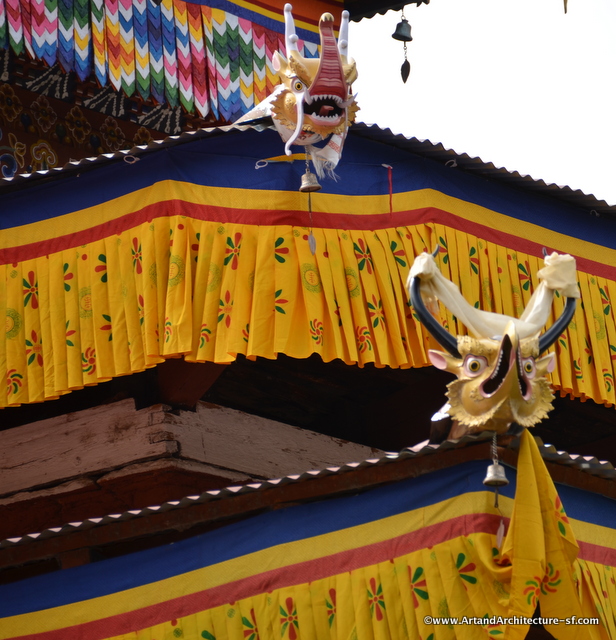 Our day began at Kyichu Lhakhang (Peaceful Temple), one of the oldest monasteries in Bhutan. The oldest portion of the temple is believed to have been built in AD 659 by King Songster Gampo of Tibet. Additional buildings were built in 1839 and in 1968.
Our day began at Kyichu Lhakhang (Peaceful Temple), one of the oldest monasteries in Bhutan. The oldest portion of the temple is believed to have been built in AD 659 by King Songster Gampo of Tibet. Additional buildings were built in 1839 and in 1968.
While photos are not allowed inside there is much to see at the site.
This is a chorten, often called stupas in other Buddhist countries. The chorten is literally a receptacle for offerings and in Bhutan all chortens contain religious relics. This chorten at Kyichu Lhakhang contains the ashes of Dilgo Khyentse Rinpoche the revered Buddhist master and teacher of the queen mother, he passed away in 1992.
The pinnacle of the chorten symbolizes enlightenment. The spire symbolizes fire and has 13 steps representing the 13 steps that lead to Buddhahood. The hemispherical dome symbolizes water, and the square base, earth.
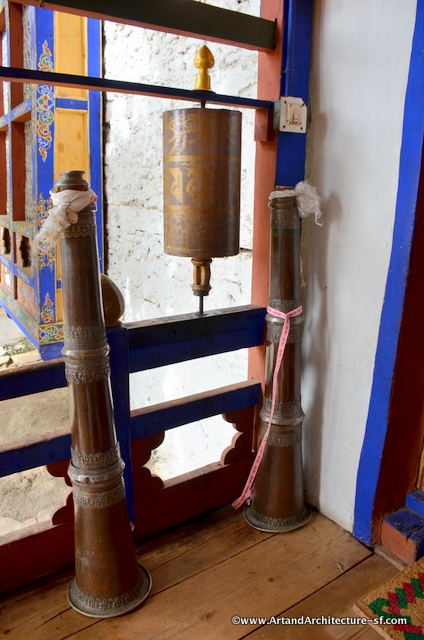
A pair of Dharma trumpets and a prayer wheel. The trumpet is collapsable and the sound is analogous to an elephant singing.
Bhutan is a Buddhist country and the religion seeps into every segment of life. Prayer Wheels are everywhere.
Prayer wheels are devices for spreading spiritual blessings and well being. In these larger prayer wheels rolls of thin paper, imprinted with many, many copies (the more the merrier) of the mantra (prayer) Om Mani Padme Hum, often printed in an ancient Indian script or in Tibetan script, are wound around an axle in a protective container, and spun around and around. Typically, larger decorative versions of the syllables of the mantra are carved on the outside cover of the wheel.
Buddhists believe that saying this mantra, out loud or silently to oneself, invokes the embodiment of compassion.
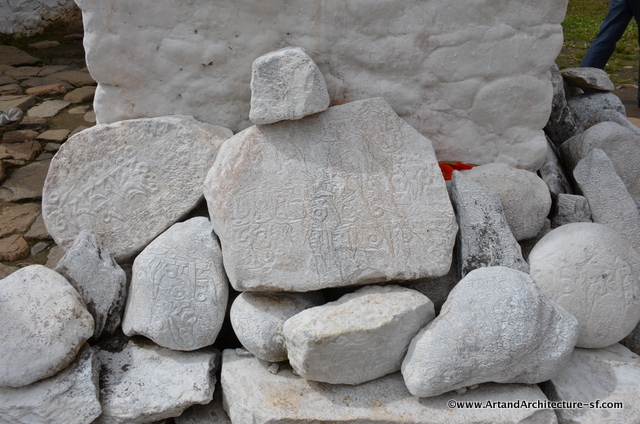 Viewing a written copy of the mantra is said to have the same effect and the mantra is carved into stones left in piles near paths where travelers will see them.
Viewing a written copy of the mantra is said to have the same effect and the mantra is carved into stones left in piles near paths where travelers will see them.
You will find stray dogs everywhere in Bhutan. It is said that in Bhutanese Buddhism there is a dark space between death and enlightenment. In this dark space the dogs tail will light the way, so dogs are revered in Bhutanese culture.
Ceremonial cakes adorn all the alters in Bhutan’s monasteries, however, since photos are not allowed it has been difficult for me to bring them to you. Today I had the honor of stepping into the work room of Kyichu Lhakhang where they make these cakes. The base is a flour type cake, but the ornamentation is butter. The larger pieces are painted once carved, the color is integral to the butter in the smaller ornamentation.
While I can not confirm what this monk was calling about, it appeared he was checking something in the script that sat before him, I later saw him using his phone to look things up on the web. I have no idea if these are recipes, directions for designs or prayers, but it is an excellent example of how the cell phone has invaded Bhutan.
This monk was sorting supplies, molds and dyes for the process of making the cakes. These cakes adorn every alter, once they have outspent their usefulness they are fed to the birds.
Whenever you step into a Buddhist temple you are required to remove your shoes, this always makes for a colorful and fun site.
Throughout Bhutanese temples you will find these delightfully colorful hangings. The center pillow appearing piece is also found inside and out in monastaries. These are strictly symbolic, a showing of protecting the faithful from the sun and the rain, similar to the umbrella found throughout temples in India.
Kuzuzangpo
